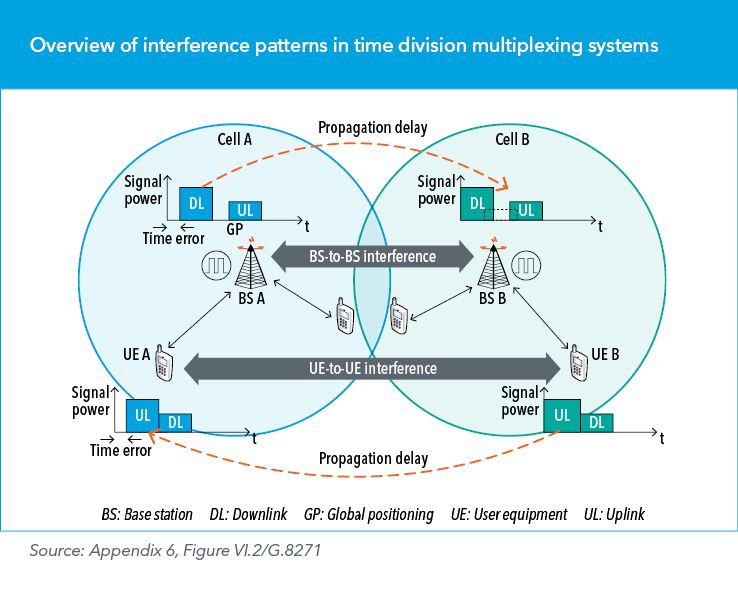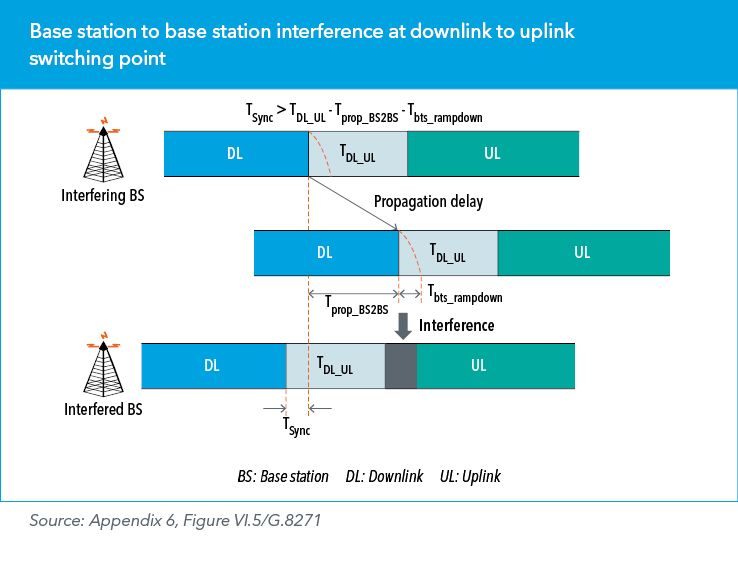
Synchronization and the impact of UTC discontinuities


Stefano Ruffini, Rapporteur, Question 13/15, ITU–T Study Group 15 and
Silvana Rodrigues, Senior Principal System Engineer, Huawei
Accurate synchronization is fundamental to effective telecommunication network operations.
Synchronization is more important than ever in today’s 5G networks and will be even more so in future mobile networks, where emerging radio technologies and network architectures support increasingly demanding use cases, such as time-sensitive networking for automated vehicles or controlling robots in smart factories.
Time synchronization
Time-synchronization references in telecommunications sometimes involve continuous time scales, as opposed to time scales using leap seconds.
The ITU Telecommunication Standardization Sector (ITU–T — one of three Sectors of the International Telecommunication Union) includes an expert group on network synchronization and time distribution performance (ITU–T Study Group 15 Question 13).
Applications discussed in Question 13/15 generally require continuous time scales. The related performance requirements, in fact, are based on a continuous ideal reference timing signal (e.g. when expressed in terms of the metrics specified in ITU–T Recommendations G.810 and G.8260).
Synchronization types
Different types of synchronization are applicable in telecommunications:
- Frequency synchronization — significant events occur at the same frequency.
- Phase synchronization — significant events occur at the same instant.
- Time synchronization — significant events occur at the same instant and sharing a common time scale and epoch.
Frequency synchronization typically follows Coordinated Universal Time (UTC), also known as the international reference time scale. A note in ITU–T Recommendation G.810, for example, says:
“The reference frequency for network synchronization is the frequency which generates the UTC time scale.”
A continuous time scale for frequency synchronization
The use of a continuous time scale is important for applications using frequency synchronization where phase leaps can have a negative impact on performance.
This is also true in the case of time synchronization. In fact, requirements currently discussed under Question 13/15 are mainly derived from 3GPP (3rd Generation Partnership Project) specifications, where the use of a continuous time scale is explicitly required.
One example is specification TS 38.401, which states:
“… continuous time without leap seconds traceable to common time reference for all gNBs in synchronized TDD-unicast area. In the case the TDD‑unicast area is not isolated, the common time reference shall be traceable to the Coordinated Universal Time (UTC).”
Interference risk with unsynchronized base stations
Time division duplex (TDD) signals can be transmitted in uplink or downlink according to a specific timeslot allocation. This requires UTC traceability to coordinate the transmission of the start of radio frames between adjacent base stations, thereby preventing interference or, in the worst case, service stoppage.
Station-to-base interference can occur if base stations are not properly synchronized, and the time synchronization error exceeds some predefined limits. (See the two figures below for an example related to downlink and uplink switching.)
ITU–T Recommendation G.8271, Appendix VI (Time synchronization aspects in TDD based mobile communication systems), notes:
“Given the 3GPP requirement for a continuous timescale, the actual implementation in this case could make use of the content of the distributed UTC information that is not impacted by leap seconds, e.g., GPS time in case the reference is carried by a GPS signal.”


GPS time without leap seconds
The Global Positioning System (GPS) time scale has become widely used in telecommunication applications as the only leap-second-free time scale available globally.
Current GPS solutions avoid clock disturbances by making use of time scales and information that do not include leap seconds. The precision time protocol (PTP) time scale, for example, is based on international atomic time (TAI) or GPS time.
For applications requiring standard “time of day” information (e.g., for charging, timestamping of alarms, etc.), UTC time may also need to be recovered. Such applications must be ready to address the occasional, sudden “time jump”.
UTC without leap seconds
Telecommunications could benefit from measures to define a continuous UTC without additional leap seconds — or where periodic adjustments are performed over sufficiently long periods to avoid impact on normal network operation.
This article first appeared in ITU News Magazine: The future of Coordinated Universal Time – part of a series of editions on topics to be discussed at the World Radiocommunication Conference (WRC-23), from 20 November to 15 December in Dubai, UAE.
Download your copy of the ITU News Magazine: The future of Coordinated Universal Time.
Header image credit: Adobe Stock
